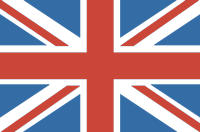The gap between US stocks and their European counterparts has now reached record levels. Over the last five years, the Stoxx Europe 600 index has risen by 25%. America’s S&P 500, however, has nearly doubled in that time. Meanwhile, as soon as the US election was called, a “Trump trade” drove sharp rises in share prices stateside. In Europe, on the other hand, it brought an end to the rally that had only just begun in some markets. While the dollar rose, the euro fell.
For now, it appears that divergence will continue. The two big economies have been growing apart for years, Europe’s recovery from the Covid-19 pandemic having proceeded far more slowly than America’s. And whereas the US is in the throes of a revolution in artificial intelligence, and China is engaged in a historic transition into renewable-energy technologies, Europe appears unsure of where it wants to go next, if anywhere.
The continent is trapped between an increasingly protectionist US and an ever more competitive China, a bad spot to be in when nearly a third of your exports are destined for these two markets. China’s successful use of industrial policy to take the leadership of key sectors such as electric vehicles and solar panels has left Europe’s slowly-adapting producers with a shrinking share of the Chinese market. Meanwhile, assuming the incoming US president makes good on his promise to slap tariffs on imports across the board, Europe’s biggest foreign market will suddenly become less friendly as well.
Reversing this divergence would require some kind of growth stimulus, of the sort Donald Trump proposes with tax cuts and deregulation. One possibility that has been mooted, and which could make a substantial difference, would be a strategy to both stimulate the economy and improve the competitiveness of its firms. Inspired by a report published in September by Mario Draghi, the former president of the European Central Bank, the European Union is pushing for the adoption of an industrial policy similar to what Joe Biden did in the US, using a mix of subsidies and tariffs, funded from the issuance of debt, to build its own renewables sector.
To date, though, Brussels has run into the objections of individual governments, which resist a continental approach in order to advance their national interests: German intransigence on debt, France and Italy favouring their own firms in awarding contracts and thus producing a lot of smaller-scale producers which can’t compete with American and Chinese behemoths, and so forth. Add in fragmented capital markets, with each country protecting its stock markets and banking systems, and Europe simply can’t mobilise the pools of capital needed to invest in many new technologies the way its rivals can.
Necessity may, however, finally force European governments to allow Brussels greater leeway to act aggressively. The key moment could come in February’s German elections. The outgoing government was crippled and ultimately brought down by infighting among parties which were only ever friends of convenience. The Social Democratic Chancellor and his cabinet colleagues from the Greens wanted to borrow to invest whereas the Finance Minister, who comes from the neoliberal Free Democrats and is a balanced-budget zealot, seemed prepared to let the economy deteriorate endlessly if such was the price of a black bottom line in the government accounts.
If a new government emerges that shares Brussels’s sense of urgency, then Europe may be able to respond to Trump by reverting to the Biden playbook. That would give the tale an ironic twist, since in its own birthplace Bidenomics will in a matter of weeks be mere fodder for future historians.










Join the discussion
Join like minded readers that support our journalism by becoming a paid subscriber
To join the discussion in the comments, become a paid subscriber.
Join like minded readers that support our journalism, read unlimited articles and enjoy other subscriber-only benefits.
Subscribe